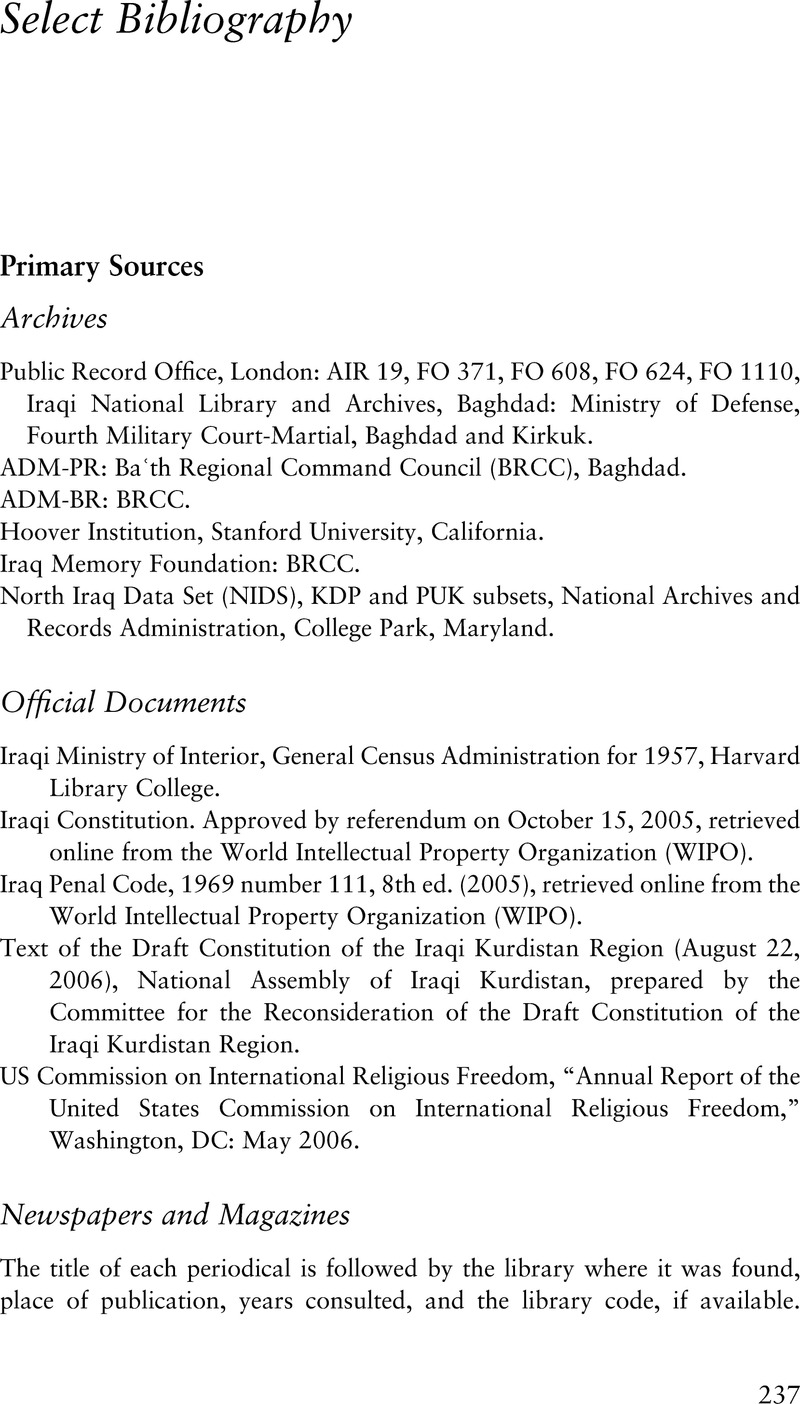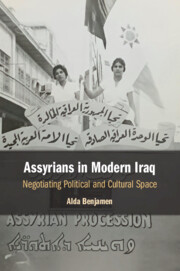Book contents
- Assyrians in Modern Iraq
- Assyrians in Modern Iraq
- Copyright page
- Dedication
- Contents
- Figures
- Preface
- Acknowledgments
- Note on Transliteration
- Abbreviations
- Introduction
- 1 Assyrians and the Iraqi Communist Party
- 2 The Role of Assyrians and Communists in the Kurdish Uprising (1961–1975)
- 3 Between Reconciliation and Repression
- 4 Compliance, Negotiation, Resistance
- 5 The Reestablishment of the Assyrian Nationalist Political Movement (1970s–1980s)
- Conclusion
- Book part
- Select Bibliography
- Index
- References
Select Bibliography
Published online by Cambridge University Press: 20 January 2022
- Assyrians in Modern Iraq
- Assyrians in Modern Iraq
- Copyright page
- Dedication
- Contents
- Figures
- Preface
- Acknowledgments
- Note on Transliteration
- Abbreviations
- Introduction
- 1 Assyrians and the Iraqi Communist Party
- 2 The Role of Assyrians and Communists in the Kurdish Uprising (1961–1975)
- 3 Between Reconciliation and Repression
- 4 Compliance, Negotiation, Resistance
- 5 The Reestablishment of the Assyrian Nationalist Political Movement (1970s–1980s)
- Conclusion
- Book part
- Select Bibliography
- Index
- References
Summary

- Type
- Chapter
- Information
- Assyrians in Modern IraqNegotiating Political and Cultural Space, pp. 237 - 247Publisher: Cambridge University PressPrint publication year: 2022

